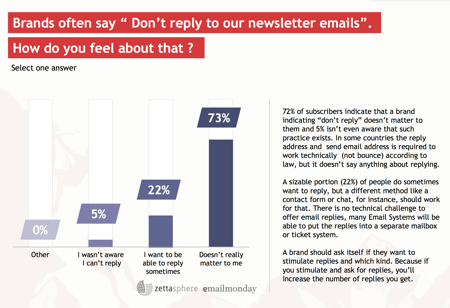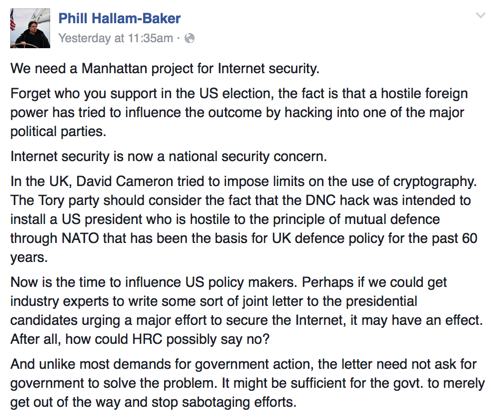Email addiction survey
The great folks over at Zettasphere and Emailmonday have released their Email Addiction Survey. Nothing surprising in the data that I can see, although I suspect one particular data point is going to surprise folks.
Yup, more than 70% of people don’t really care about a do not reply address in a message. Honestly, I’m not surprised. Most users don’t really care. In all honesty it probably doesn’t affect delivery that much any longer, either. I still think it’s generally a bad idea but as long as you’re providing a communications channel for recipients to connect with your company it’s probably not going to be a giant problem.
